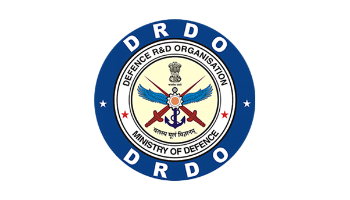Technology Trends in Aviation Industry: A dynamic industry that depends on smart and cooperative R&D is aviation technology.
To maintain their competitiveness, airlines must constantly look for new methods to improve their current operations and business procedures, innovate even more, and stay dependable while growing their ESG plans.
Airline operators must, on the one hand, offer more customer-focused goods and services to satisfy customers and increase profits.
The industry-wide movement, on the other hand, aims to optimize supply chains, lower greenhouse gas (GHG) emissions, and improve the whole traveler experience through tools like smart airports, day-of-travel assistants, and customized offers.
Digital transformation continues to be a major sector innovation driver, bridging all of these gaps and more, fostering data-driven insights and more profitable and meaningful decision-making.
Airlines, manufacturers, and regulatory agencies are concentrating on enhancing efficiency, safety, and sustainability as the demand for air travel rises globally.
In addition to improving the traveler experience, emerging technologies are tackling pressing issues including fuel consumption, air traffic congestion, and environmental effects.
Several significant developments in aviation technology are expected to completely transform the sector by 2025.
This article will examine important developments in aviation technology and show how airlines can stay ahead of the competition by adopting these trends.
Market Growth of Aviation Industry 2025
According to Mordor Intelligence, At a compound annual growth rate (CAGR) of 2.87%, the aviation market is projected to reach USD 395.76 billion by 2030 from an estimated USD 343.54 billion in 2025.
 Over time, the Asia-Pacific region has grown to be a major aviation center.
Over time, the Asia-Pacific region has grown to be a major aviation center.
Due to a rise in demand for air travel, the region’s growing economies such as China and India are seeing tremendous growth in their respective civil aviation businesses.
As a result, during the forecast period, Asia-Pacific revenues are anticipated to expand at a rapid pace.
Trends of the Aviation Industry in 2025
Embracing Artificial Intelligence and Machine Learning

The aviation sector is transforming thanks to artificial intelligence (AI) and machine learning (ML), which are increasing productivity while maintaining the sector’s strict safety regulations.
AI and ML are proving to be useful tools for improving customer experience and streamlining operations, despite aviation’s historically cautious approach to implementing new technologies.
Chatbots driven by AI are now available 24/7 to help, responding to frequently asked queries by tourists regarding baggage regulations, airline timetables, and other topics.
Airlines can devote human resources to more complicated consumer needs by automating these encounters.
AI and ML are transforming airplane maintenance in addition to customer service. Predictive maintenance, made possible by advanced data analytics, assists airlines in identifying possible mechanical problems before they become serious.
Passenger safety is guaranteed, operating efficiency is increased, and unplanned breakdowns are reduced thanks to this proactive approach.
Additionally, AI is crucial to in-flight optimization. Artificial intelligence (AI)-driven systems may recommend fuel-efficient routes by analyzing real-time data, minimizing carbon emissions and fuel usage.
AI-powered technologies are supporting the aviation sector in reducing its environmental impact while preserving cost-effectiveness as sustainability gathers popularity.
Advancements in Biometrics and Security

Digital identification and biometrics are now a regular feature of our annual trends report.
Enhancing the customer experience and boosting security within airports and eventually across borders are both made possible by utilizing biometrics.
Global adoption of digital identity and biometric technologies is accelerating.
By only scanning their faces, travelers can utilize biometric technology to efficiently navigate through every step of the process, from self-boarding gates and pre-security automated gates to enrollment at a kiosk or counter.
To provide a smooth travel experience from curb to gate, airports and airlines are progressively implementing biometric solutions, and by 2025, these technologies should be even more common.
Sustainable Aviation Technologies
 As they approach commercial deployment, electric and hybrid aircraft are becoming more than just abstract ideas.
As they approach commercial deployment, electric and hybrid aircraft are becoming more than just abstract ideas.
While preserving operational effectiveness, these technologies promise to drastically cut greenhouse gas emissions. As a practical and revolutionary energy source, hydrogen fuel cells are becoming more and more popular.
The use of hydrogen as fuel allows airplanes to fly with zero emissions. Even if there are still obstacles to overcome, such bas uilding infrastructure for the production, storage, and distribution of hydrogen, industry-wide cooperation is speeding up development.
Beyond just propulsion, hydrogen can power auxiliary systems and airport operations.
For the first time, we are actively rethinking aviation’s position in a cleaner, greener world rather than merely reducing its environmental impact.
Sustainable Aviation Fuel (SAF), a renewable substitute for conventional jet fuel, is a significant invention in the travel sector.
Adoption is crucial to achieving global climate goals and satisfying the rising demand for eco-friendly travel options.
To ensure long-term viability and growth, SAF is changing the industry’s sustainability efforts by promoting technological improvements in fuel generation and a circular economy.
Personalization- In-flight Connectivity and Entertainment

Entertainment and connectivity in flight are becoming crucial elements of the traveler experience.
Airlines are investing in cutting-edge satellite technology to offer high-speed internet connectivity on flights as passengers’ expectations to stay connected while flying rise.
This improves the whole travel experience by enabling passengers to work, stream material, and maintain relationships with loved ones.
End-to-end customization at every stage of the trip is becoming more and more expected from travelers.
Customers anticipate that their travel experience will change and adapt in a smooth, contextual, and intuitive manner as technology advances.
Additionally, airlines are providing content that is customized to each passenger’s preferences by utilizing data analytics to personalize in-flight entertainment selections.
The goal of this modification is to give airlines useful information about passenger behavior.
Internet of Things and Private Wireless Networks

The technological revolution that is taking place in airports and airlines is centered on the Internet of Things (IoT).
To process the massive volume of data generated by robotics and the Internet of Things, the foundational structures must undergo significant transformation.
These include the effective use of high-speed and low-latency networks to facilitate real-time data transmission, edge computing architecture to process data close to its production location, and high-performance cloud infrastructure for data storage and analysis.
Furthermore, improving cybersecurity is essential to protecting this networked ecosystem from possible dangers.
Airports and airlines are investing in scalable, adaptable IT systems that can adjust to the growing complexity and needs of IoT applications, in addition to the technical backbone.
When combined, these infrastructure developments guarantee that IoT technologies not only operate without hiccups but also stimulate innovation in the aviation sector.
The advantages of Private Wireless Networks (PWNs) are becoming more and more obvious; these include increased operational efficiency due to better coverage and better network security.
PWNs are, in fact, essential for those airports and their partners investigating technologies like autonomous cars and the Internet of Things.
Augmented Reality, Virtual Reality, and Extended Reality

The training of aviation professionals is being completely transformed by immersive technologies such as Augmented Reality (AR), Virtual Reality (VR), and Extended Reality (XR).
Modern simulation systems that very accurately mimic real-world situations are now available to pilots, flight attendants, ground operations, and technicians.
Employees may rehearse emergency protocols, handle intricate procedures, and react to difficult situations in a secure setting by using VR-based training packages.
In the same way, technicians may access comprehensive schematics and step-by-step instructions during maintenance by using AR overlays, which lowers errors and increases efficiency.
In addition to lowering training expenses, these immersive solutions boost confidence and skill retention, making aviation workers more equipped to handle obstacles in the real world.
Conclusion
With AI-driven automation, sustainable fuel options, and next-generation air traffic management opening the door to a more intelligent and effective future, the aviation sector is poised for a technological revolution.
Air travel is expected to become faster, safer, and more sustainable than ever before as supersonic travel returns and cybersecurity safeguards advance.
In addition to helping airports and airlines, these advances will improve the overall traveler experience by increasing the dependability and environmental friendliness of flights.
Even if obstacles like infrastructure improvements, investment expenses, and regulatory approvals still exist, aviation innovation is advancing at an inexorable rate.
Finding a balance between environmental responsibility, passenger safety, and technical developments is crucial for the future of air transport.
The industry’s capacity to adjust and welcome these developments as we go into 2025 will dictate how soon we usher in a new era of aviation excellence.
As aviation technology evolves, advanced FPGA-based solutions and high-speed communication interfaces play a crucial role in ensuring efficiency, security, and real-time intelligence.
At Logic Fruit Technologies, we specialize in developing cutting-edge solutions tailored for aerospace and defense applications.
From real-time data processing to avionics development, we are experienced in delivering tailored solutions for mission-critical applications. Connect with us today to discover how our expertise in FPGA-based design and system integration can help you stay ahead in 2025’s Market, evolving market







